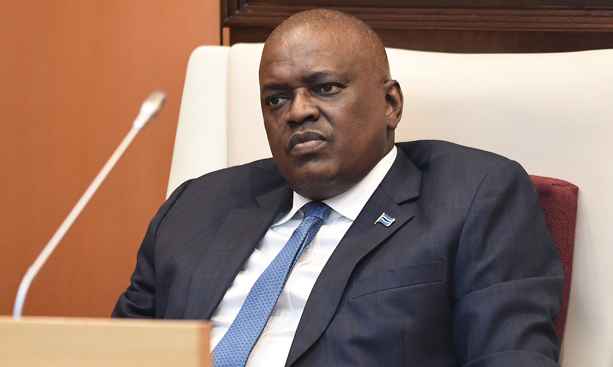Angry residents of Selibe Phikwe, traumatised and consumed by fear, have appealed to the highest office in the land through a petition to President Mokgweetsi Masisi over the on-going earth tremors in the deserted mining town.
The disgruntled residents recently took to the streets out of despair, holding peaceful demonstrations and later delivering a petition containing their grievances to the District Commissioner, Mokgethi Nfila. In the petition, the residents said the seismic activities have now increased in frequency and intensity, which they believe are life threatening because the tremors cause uncontrollable shaking and rattling of houses, cracking walls and foundations are of great concern to them. “We understand government efforts of team of technical experts which is on the ground to establish the causes of underground seismic activities, we however at logger heads with the information we have so far received which is contradictory and changes from time to time. This has caused uncertainty amongst us as citizens of Selebi Phikwe as we now fear for our lives,” the petition reads.
They further pointed out that they are not happy with government and its position on the issue of the tremors activities being not life threatening. “We now require for establishment of a formal feedback mechanism which will meet from time to time with Phikwe residents in the form of a committee,” the residents added. They are of the view that the after mine crisis committee once it has been formulated will be kept abreast of all developments on rehabilitation and immense risk on the going of community reports raised so far. They argue that the matter should be attended to as a matter of urgency due to the continuous vibration of windows, frequent heavy underground earth tremors throughout the town and trembling walls among others.
The petitioners have urged President Masisi to attend to their grievances and respond to their petition within 14 days after receiving their lobby. “While we wait upon government to act on the matter, we will move ahead to set a standby information committee, which will gather data on all activities throughout the town and surrounding areas. The committee will in future after government responds be the contact centre through which matters raised will be communicated to and from people and government,” they further pointed out.
One of the petitioners, Aaron Sefo who is also former BCL mine employee told The Patriot on Sunday in an interview that the tremors are a result of flooded underground shafts at the now defunct BCL mine. “It is in the public domain that BCL liquidator flooded the shafts against Mine Quarries Act as he was trying to reduce costs during the care and maintenance period. There is no needs to engage experts as we already know what causes the problem,” he buttressed. According to Sefo, government should hire people to pump out water from the shafts as that is the only solution to the current problem. He argues that engaging experts will results in wastage of funds. Sefo observes that the liquidator decided to flood the shafts as there was no money to keep on running the pumping system.
In a press statement, Deputy Permanent Secretary in the Ministry of Minerals, Green Technology and Energy Security, Dr Themba Mmusi informed members of the public that ground vibrations in Phikwe are not life threatening hence should not cause panic. Mmusi went on to say that the vibrations which vary in intensity are also characterized by noise. “The vibrations are small and are believed to be originating from over 1 000 meters underground, which ordinarily will not pose any hazard to people and animals on the surface,” Mmusi held. He insists that the ministry through Botswana Geoscience Institute has already engaged experts to conduct detailed investigations. The professionals, will carry out an investigation on the causes or sources of the tremors, as well as determine their magnitudes and frequency, Mmusi said. So far the experts have already identified sites and preparations for the surface stations have been completed and this will be followed by installation of the underground stations.
